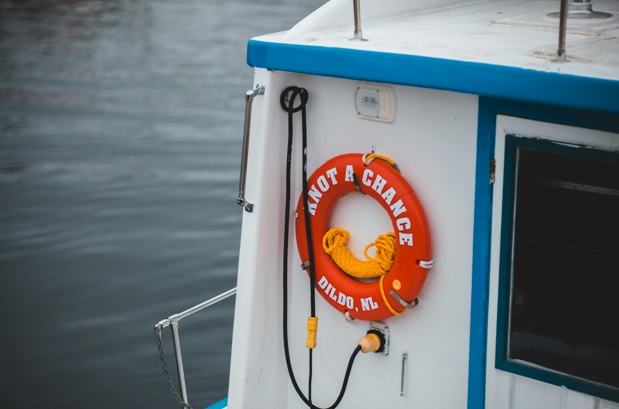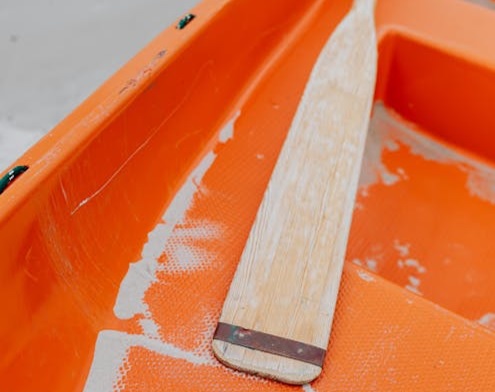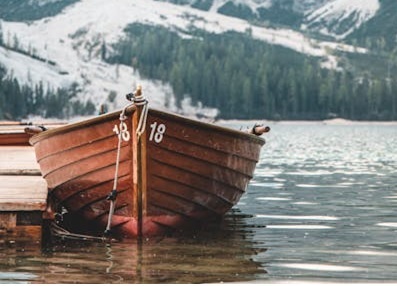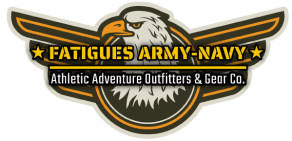A Safe Boating Checklist
Posted by: Fatigues Army Navy Outdoor Gear on 5th Jun 2024
Recently we posted an article on what to bring with you for a safe and successful Poconos fishing trip.
Well, given that Lake Wallenpaupack is right in our backyard, that it’s one of the most visited lakes in Pennsylvania, and that there are several boat rental marinas right on the lake, we figured some anglers wouldn’t be shore-bound for long.
With that said, and though much of what you need for fishing you will also need for boating, there are some additional things you’ll want to bring with you on a cruise, if only for the day.
Throw your favorite camo shirt and shorts in your duffel and get ready to start here with what you’ll need for a safe and productive day on the water.
The Legal Requirements, Per the Coast Guard
First we need to take a look at the legal requirements, as per the United States Coast Guard and the Pennsylvania Fish & Boat Commission.
The USCG has separate requirements for vessels depending on their length. Regardless, these requirements concern the presence of flotation devices, fire extinguishers, visual distress signals, and sound producing devices. For detailed information according to vessel size, please see BoatUS.org’s breakdown.
As per the Pennsylvania Fish & Boat Commission, all vessels require at least one wearable PFD (personal flotation device) for each person on board. Vessels 16 feet or longer must also have one USCG-approved Type IV PFD - a ring buoy or seat cushion.
For more information, visit the USCG website or the Pennsylvania Fish & Boat Commission’s website.
While most rental marinas will equip their vessels with what you legally need to have on the water, there are other tools, equipment, accessories and safety gear you will want to bring along anyway, so let’s cover these.

What Else You Should Have
You’ll want to be well-prepared, even for a day-long float. It’s much better to have the following than to need them and not have them:
- A fire extinguisher: Ask the marina for one if there isn’t one on the boat already.
- An oar or paddle: Hopefully you’ll never need it, but you’d be surprised that you can row a pretty lard boat when needed.

- Flares: Flares can be necessary to get attention from other boaters in the event of engine failure or other vessel distress.
- A whistle: Whistles can also be used to attract the attention of other boaters on the water if you need assistance.
- A flashlight: Always carry at least one flashlight, even if you only plan to be on the water during daylight hours. Not only is a flashlight a life saver in the dark, but it can be used as an all-around white light if you get stranded on the water in the dark.
- A first-aid kit: Always have a first-aid kit on the water. It should contain at minimum gauze, bandages, and disinfectants to treat minor wounds.
- Sunscreen: On the water, you won’t get any relief from the sun so it’s important always to have sunscreen on board for all with you.
- Bug repellent: The bugs that bother you will depend on the season and the prevailing wind, but if they’re about, on the water you will have nowhere to hide.
- Floating sunglasses: You need sunglasses to avoid snow-blindness (which happens on the water, too) but you should get floating sunglasses specifically because most don’t float. That’s a lesson better not learned the hard way. Just trust us.
- A hat: Even with sunglasses, the sun and glare can be punishing. Having a hat can keep you partially shaded even in unforgivingly bright conditions.
- Protective clothing: This means more than just your favorite camo shirt. If it’s cold, you’ll want an extra layer to keep you warm as well as gloves and a hat and earmuffs. If it’s sunny, pack a change of clothing in case what you’re wearing gets wet and you want some protection from the sun. Also, where applicable, don’t forget your bathing suits!
- Appropriate footwear: Despite what you may think, open-toed shoes are not good for a boat. You want to be supported and protected with flexible, light deck shoes that are quick-drying and still afford you a good grip and sensitivity on the deck - which will always be moving.
- Rainwear: Even if the skies look clear, pack at least a poncho or a rain jacket for each person on board. Better safe than sorry!
- Snacks and water: Water is most important here as you will get dehydrated sitting in the sun all day, but bring along some dry snacks too.
- Towels: Bring plenty along for everyone on board; you may need them.
- Your fishing tackle and bait: Whatever you’re fishing with, be sure you have enough of it. If you favor one type of lure, bring five, and always bring along plenty of spare terminal tackle and bait.
- A dry bag: Or several, if you will. You need to have a place to keep things dry, especially if the boat does not have a cabin.
- A compass and chart: Modern navigation aids and GPS-based systems like Navionics are great, but nothing can replace a chart and a compass. Best to have them, even if you never even take them out.
- An anchor: Do not assume there is an anchor on the boat. Ask the marina if there’s one and ask them to show you where it is. Also do not assume it is fast to the vessel. Always check the lines before throwing the anchor overboard.
Before Shoving Off…
- Ask the marina about any applicable local rules or regulations (sometimes there are seasonal rules; for instance, when on the water in Pennsylvania on a vessel 16 feet or less, all boaters are required to wear a life vest between November 1st and April 30).
- Ask the marina about any local hazards in the water, or areas that rentals are not permitted.
- Inquire about the vessel’s draft and how to operate all controls.
- Check to see that all lights, trim, and other mechanical controls are in order.

Gear Up Here!
As you can see, there is a whole lot besides your camo shirt that you’ll want to bring with you for a day on the water. We carry a good deal of it, so stock up here before getting ready to leave port!

